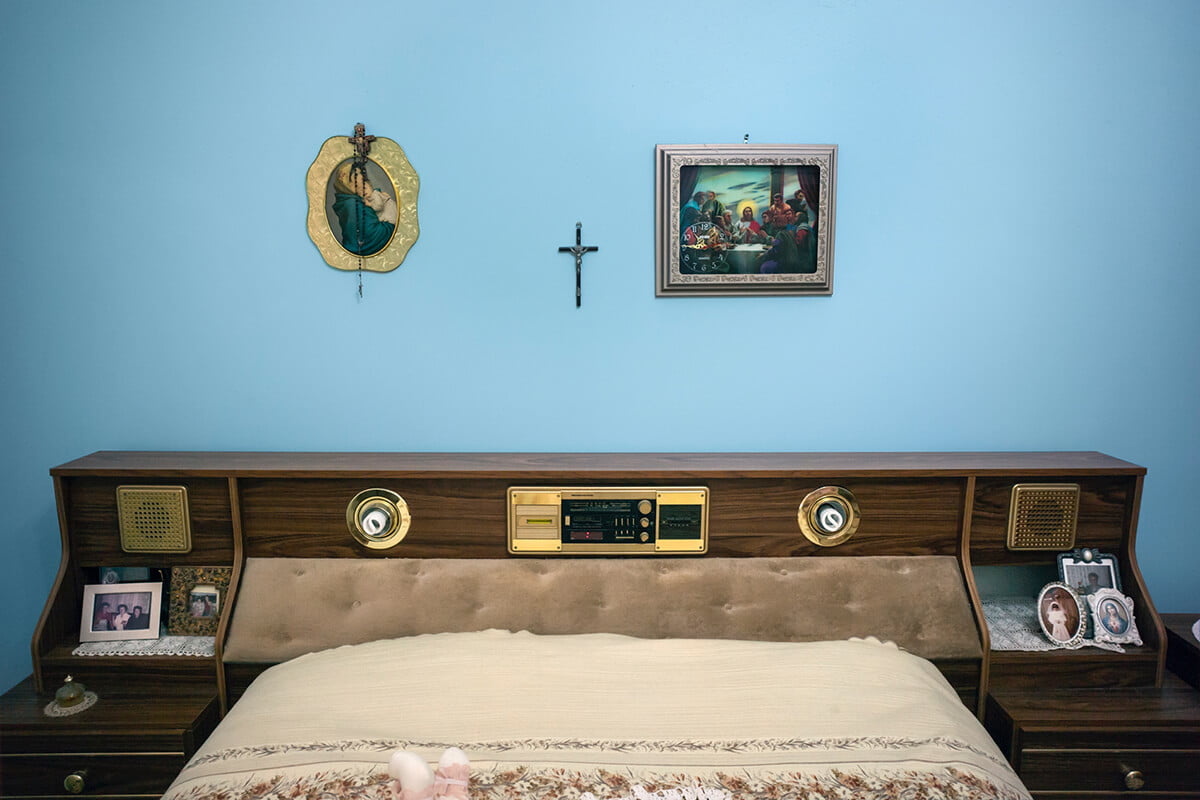EDITORS’ PICK
Behind Closed Doors
HOME SWEET HOME
Home Sweet Home Editors’ Pick
Following Marion Tandé’s selection of winning images for our recent HOME SWEET HOME competition, this compilation of 20 images represents some of the other talented photographers whose work struck us and left a mark. Each a stunning image worthy of exposure and attention…
This month’s selection was made by Kate O’Neil, Creative Director of The Visual Loop: “With ‘Home Sweet Home’ I was looking out for those scenes that – for better or for worse – tug at the heartstrings, or invoke a sense of nostalgia or belonging. Images that give a glimpse into that safe space, personal retreat or familiar surrounding that people identify with as their understanding of ‘Home’, or, in an autobiographical sense, where we can learn more about the person behind the lens than the scene that lies before it.
When selecting for editor’s picks I’m always searching for those striking photographs that have potential as an unforgettable single image, whether from a broader series or not. I enjoy the accompanying text some photographers submit with their images, which while not always necessary can be relevant when understanding the work in full context.”
These are intended to be a conversation starter… so feel free to join the discussion on our social networks.
BANNER IMAGE COURTESY OF DAVID WADELTON
www.wadelton.online / @davidwadelton
From the series Suburban Baroque – “A selection of photographs of the vanishing mid-century suburban interiors of the formerly working-class areas of Melbourne Australia that were the destination of choice for many post-war immigrants from Europe. The once-ubiquitous terrazzo, balustrades, marble columns and lions and other manifestations of pride and nostalgia for their homelands have become increasingly rare as the years pass, generations change, and gentrification takes place.
The rooms are redolent of a different era and imbued with pathos, as most are the pride and joy of a generation that is passing. The decor speaks of post-war immigration in a fascinating time capsule, where one experiences a mix of local and imported; defying current design conventions. Often the owners proudly designed the rooms to suit their preferences and to impress their friends and neighbours back in the 1970s, and they have immaculately maintained them that way ever since.”
Editor’s comment: Making a home away from home is fundamental for some of us when adjusting to a new life in a foreign place. Detail matters – like certain smells, colors, or food – as they can make all the difference when settling into new surroundings. This photograph depicts a mid-century, suburban interior of a bedroom – a style we’re told by the photographer, is common in the formerly working-class areas of Melbourne Australia, which were the destination of choice for many post-war European immigrants. These are the elements we want to bring with us into our new life, freezing them so we don’t lose the identity and comfort of our old life. A thought-provoking image.
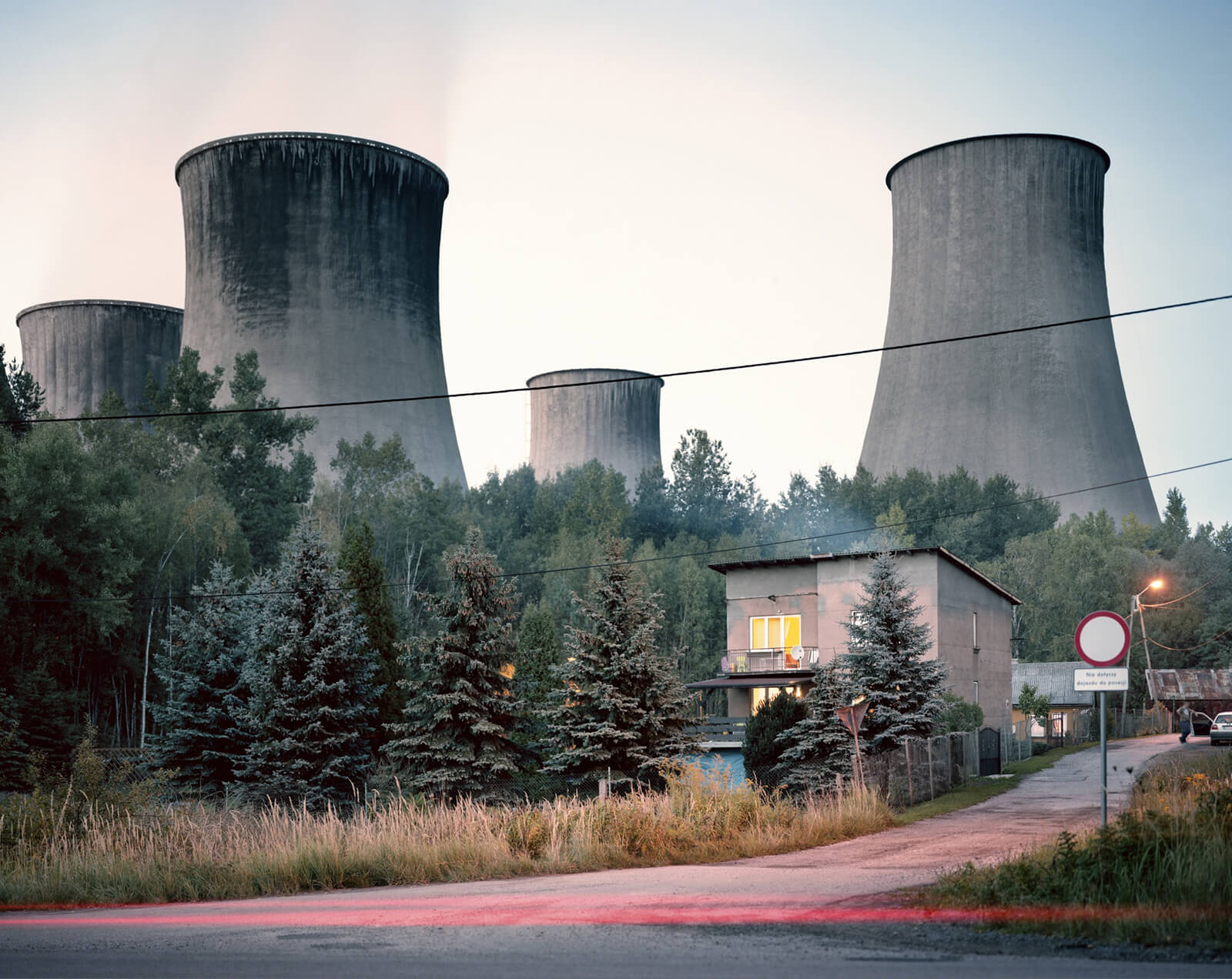
IMAGE COURTESY OF PRZEMEK KRZAKIEWICZ
@przemekkrzakiewicz
“A single-family house in front of the Siersza Power Plant in Trzebinia, in Lesser Poland Voivodeship, Poland. Siersza Power Plant opened in 1969 and is a coal-fired thermal power station. Currently the power plant is partially closed, in an element of the transition process to low-carbon energy.”
Editor’s comment: A bleak scene, a solitary family house surrounded by structures symbolising pollution, threat and isolation. This scene really emphasizes the fact we cannot always choose our neighbors, and for some that can be seriously detrimental. The photographer is able to capture the despair and danger within this environment but reminds us there is an element of hope as Poland is in the midst of its transition process to low-carbon energy… looks like the neighbors are moving out!
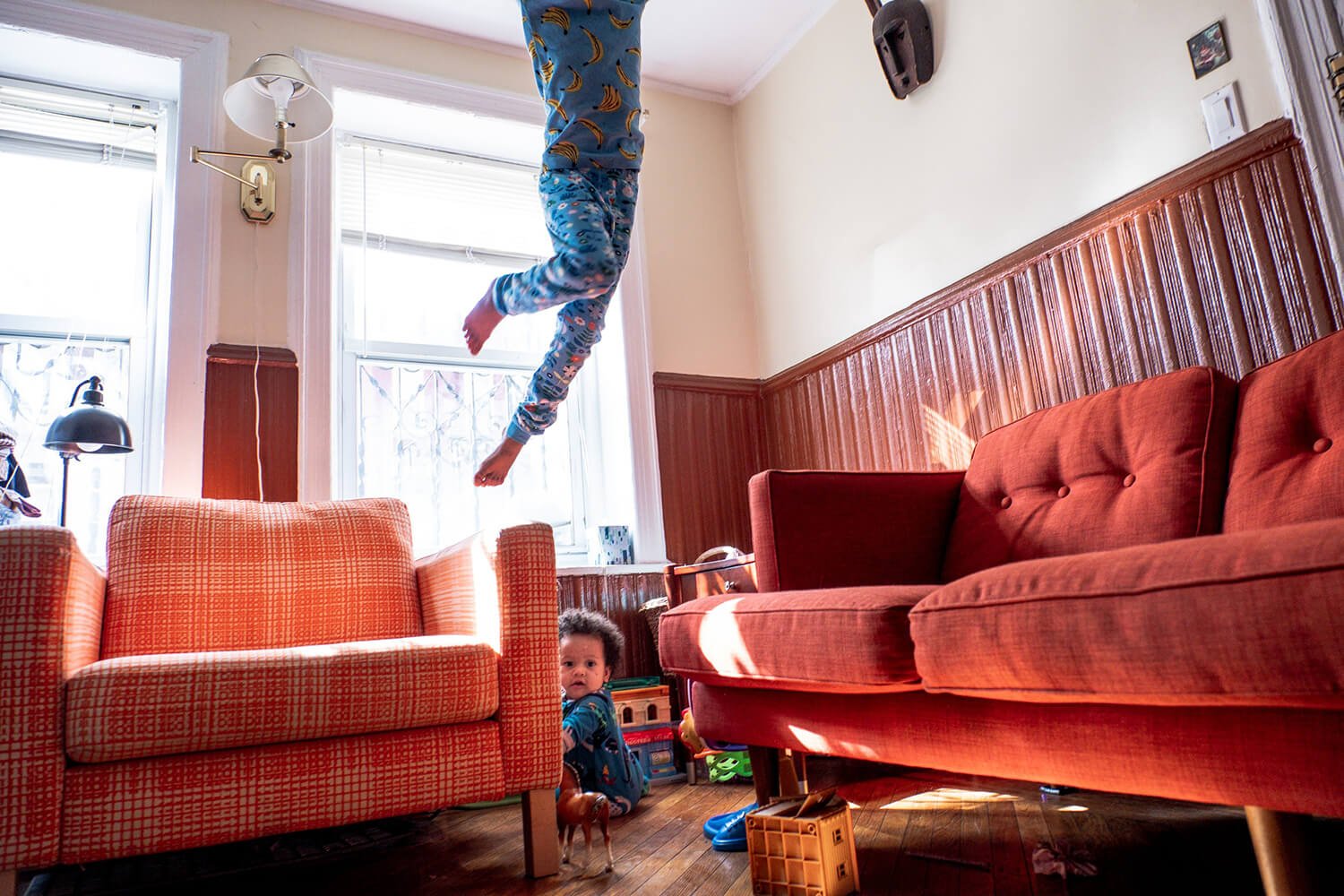
IMAGE COURTESY OF EMILY SCHIFFER
www.emilyschiffer.com / @emilyschiffer
“Throughout the pandemic, my husband and I have been working from home with two small children, and navigating remote learning in our Brooklyn apartment. Within the context of our neighborhood–a hot spot for much of the year–these unposed images chronicle our family’s inner world.
April 2, 2020: After bickering over schoolwork neither of us wants to do, Lola releases pent up energy. Ambulance sirens blare outside. They have been non-stop for weeks. I am grappling with the instability and anxiety these days hold, and decide in this moment to forgo phonics and math in favor of just about anything that sparks joy.”
Editor’s comment: A fabulous candid moment, creatively framed, that captures both the chaos and wonder of life at home, depending on your perspective. It offers a lowered, child’s-eye view of the home as a place of joy and abandon.
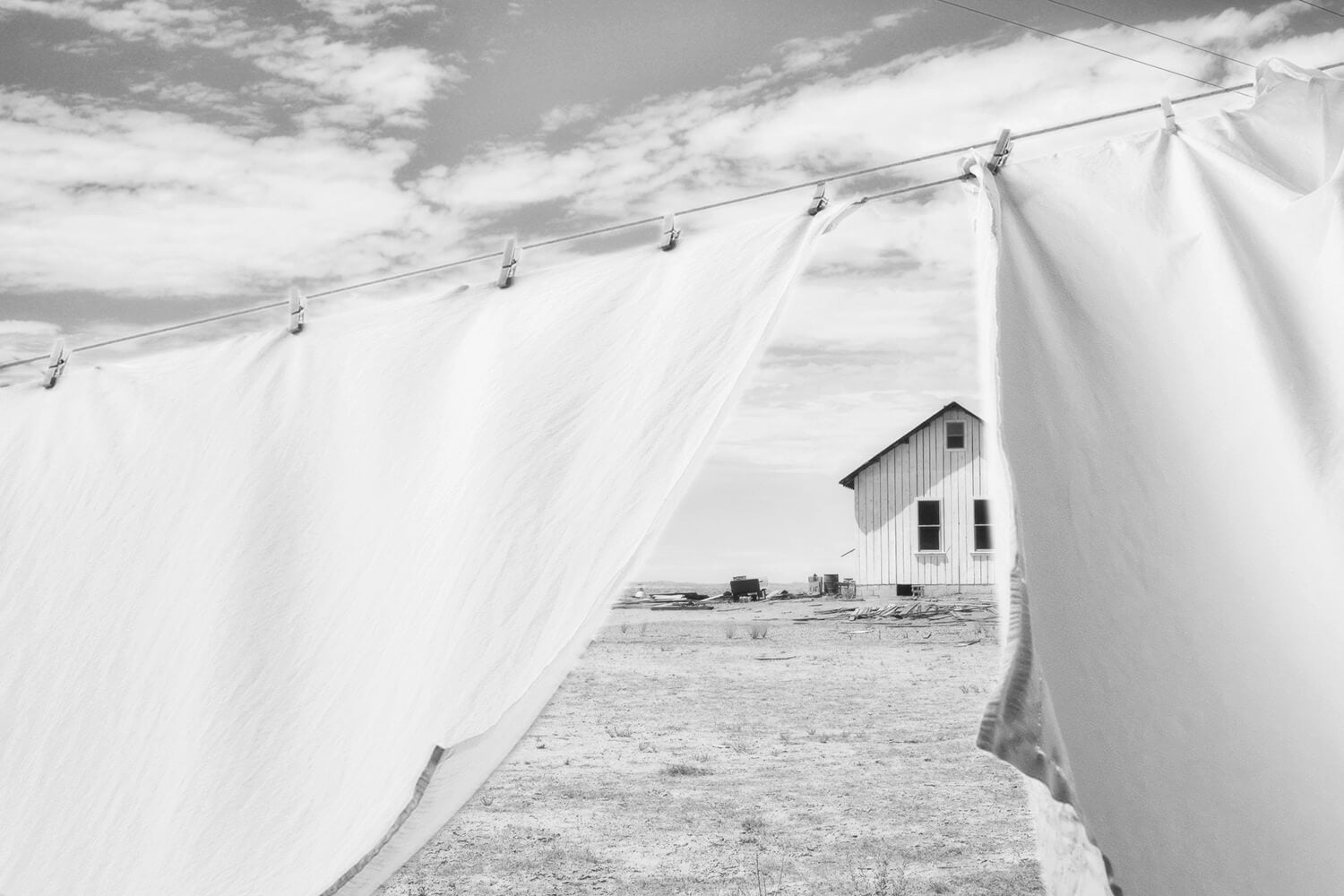
IMAGE COURTESY OF CATHERINE MARCOGLIESE
www.marcogliese.org
Blowing in the Wind #1 – “This series is about secrets. It is about the impossibility to know what transpires behind closed doors: behind the clapboard facades, the white picket fences or the fluttering pristine linen strung out on the line.”
Editor’s comment: Pinning the ‘airing your dirty linen in public’ aesthetic to the foundations of this concept is a subtle nod to the culture of secrecy most people practice in our modern society. This white picket fence idea that allegedly protects us from peer judgement and keep our status within the community intact. The photograph has a timeless quality, exposed precisely and composed to give the viewer a feeling of peeking behind the curtains – not judging, just looking.
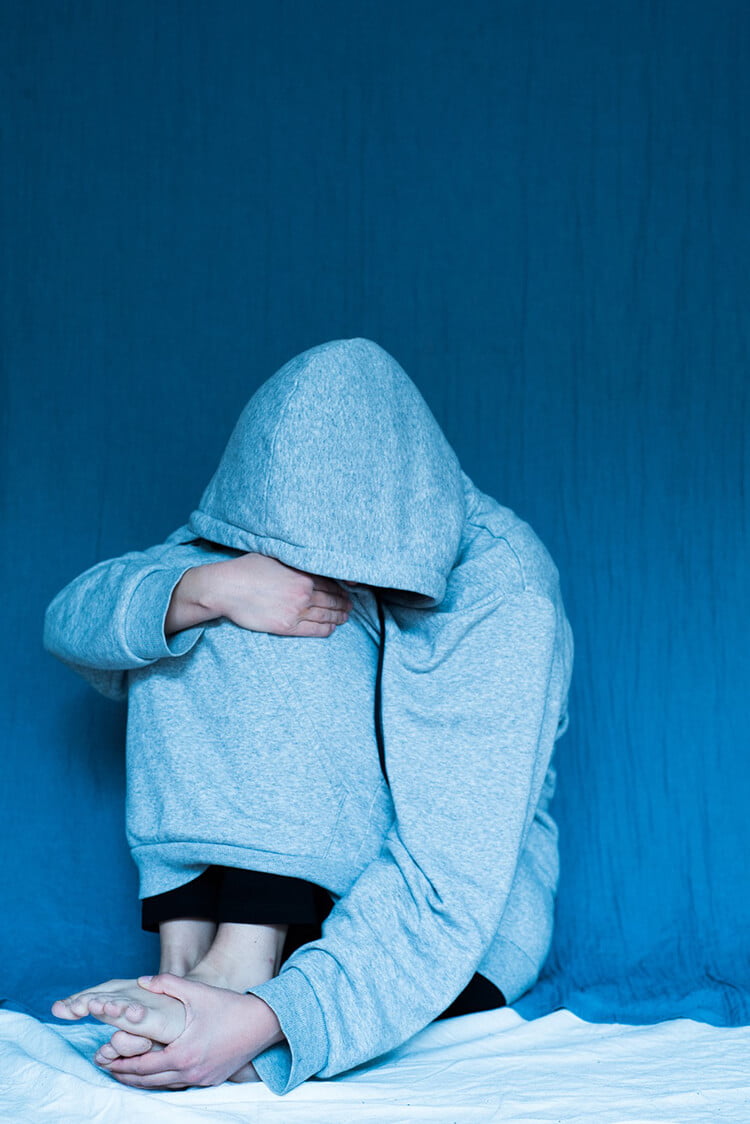
IMAGE COURTESY OF NATHALIE VISSERS
www.nathalievissers.com / @flat_and_framed
From the series Tips from an Introvert – “Hug Yourself. When the COVID-19 pandemic struck and everyone was forced to be socially isolated, and stay at home for a large portion of the time, I realised that introverts might have a slight advantage in dealing with these new rules of daily life. As a self-proclaimed introvert myself, I started sharing a daily visual ‘Tip from an introvert’ on social media. The first tip was: ‘Read a book’ and the project naturally evolved throughout the days, following my own ups and downs in lockdown-times. I ended up sharing a daily tip for the 8 weeks with the strictest regulations in Belgium, and ended up with 57 photographs in total. The goal of the project was to add some visual humor and aesthetic pleasure amidst all the serious and anxiety-inducing news that people were confronted with on a daily basis. Moreover, the project helped to bring some structure, meaning and connection with others into my own socially isolated days.”
Editor’s comment: With this self-portrait the photographer expresses to us that home – the safe space – is deep within themselves. Introverts have a difficult time operating within such an expressive society, but have, strangely enough, been coming into their own during all the recent lockdowns restrictions. The close-range color palette and sculptural element softly explores the theme and lets the viewer absorb the image at a slow pace. Portraits like this help us all understand the world of others better, and I’m looking forward to exploring the rest of the series.
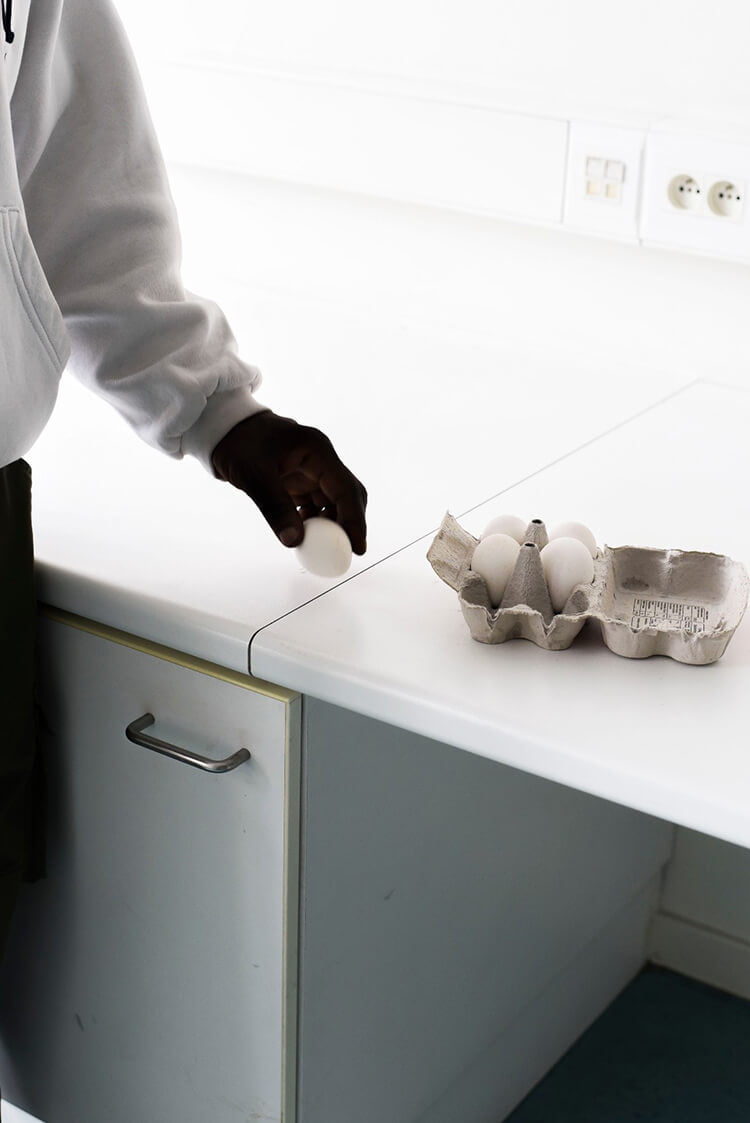
IMAGE COURTESY OF TIENE CARLIER
www.tienecarlier.be / @tienecarlier
“These pictures are part of an ongoing project about the lack of housing for undocumented immigrants in the city of Brussels. It is uncertain how many of them exactly are living in Belgium, but it has been estimated that 7 – 13% of the inhabitants of Belgium are undocumented migrants. Up to 30% are living in the capital Brussels because there, it is easier to find a job. Working illegally is their only option and they are very underpaid. It is impossible to rent a place on their own with their wage, and the governement doesn’t take action. This is why they organize themselves and crack a lot of places in Brussels to have a roof above their heads.
I have been following these groups for some time now. Every time I visit I’m startled by the size of the problem in the city. The more I get to know the people, the more places they tell me about. The lack of housing, the number of people and the amount of cracked houses are impossible to map out. The problem has been growing for years now. There is no other solution than the government ignoring them and the people themselves taking action. These housing solutions are always temporary up until their environment is tolerant.”
Editor’s comment: This image feels like it’s one small part of a very large puzzle. Its simplicity is also its complexity and it gives the impression there’s a lot more to this story. The symbolism is strong, expressing fragility, and the idea that the ‘fight, flight or freeze mode’ could be switched-on at any moment. While it doesn’t automatically lend itself to a typical editorial or photojournalist aesthetic, its clean, conceptual approach really works to draw the viewer in and to investigate further.
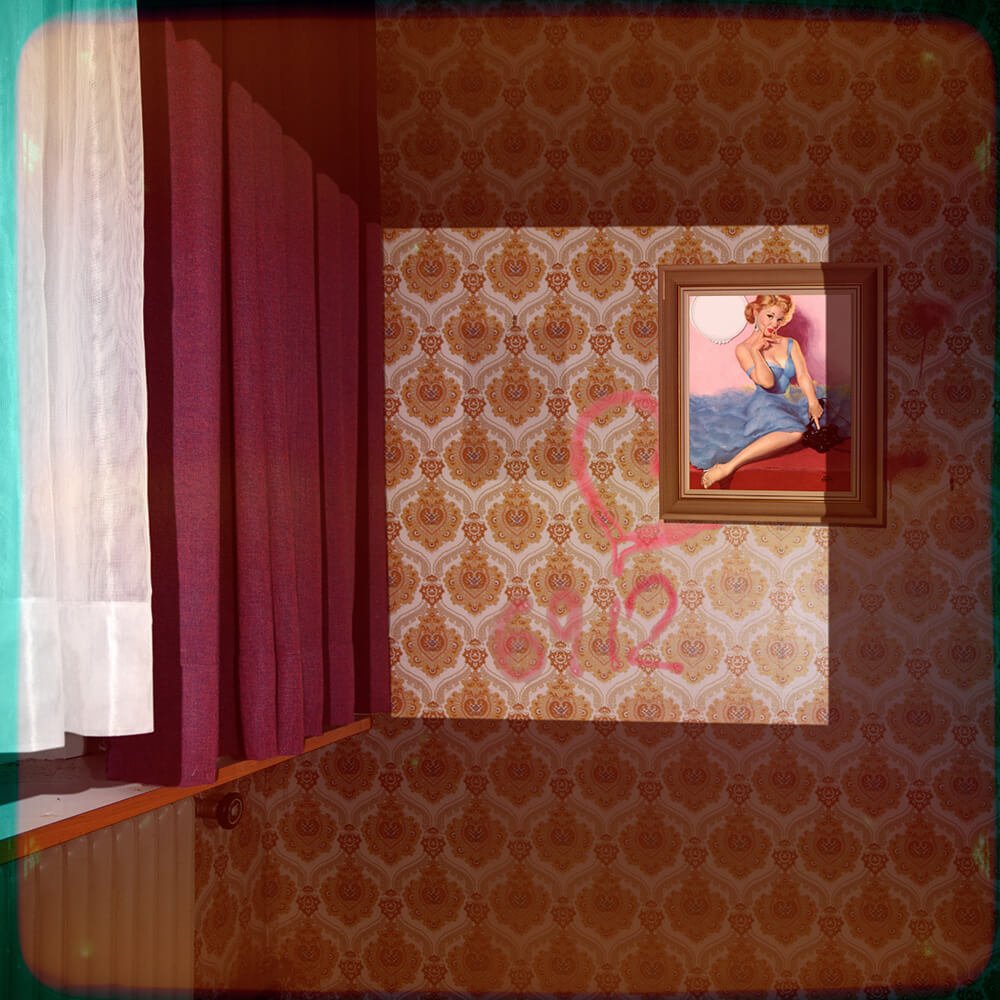
IMAGE COURTESY OF PETER FRANCK
www.peterfranck.de / @peter_franck_official
From the series Stage -“Private happiness, a wellness oasis and a place of retreat. They set the stage for simple, curious, surreal and untold stories. The sweet home becomes a sweet home or a nightmare.”
Editor’s comment: Redolent of an ad artwork for the next binge worthy, true-crime series, this sugar-coated scene has an edge of mystery and draws the viewer in willingly. The small space feels uneasy on some level, absent of living emotion or existence. The writing, or graffiti, on the wall alludes to something out of place within a traditional home setting. The photographer has really captured the concept in reverse – at what point does a home just become a house, or flat, or dwelling?
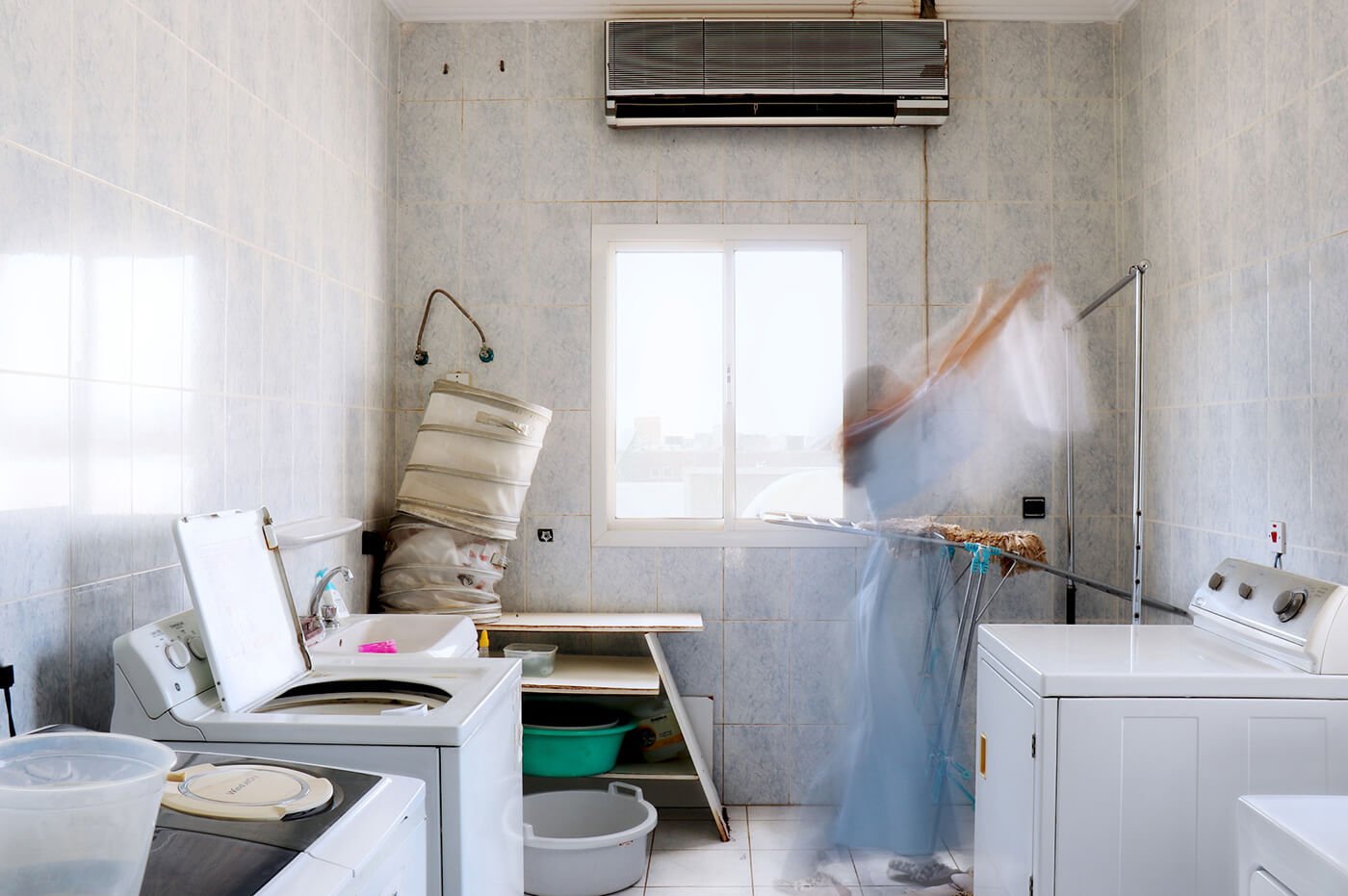
IMAGE COURTESY OF GHEED ASHOOR
@gheed.ashoor
“Laundry Room. This series of photographs portrays the places that are least seen and celebrated in any household yet utilized the most in our day-to-day Life. The photographs document ‘real’ life, seemingly mundane moments, that people don’t often capture even though they are an indispensable part of their day routine. The spaces reveal clusters of objects that are displayed in a seemingly erratic and random manner yet show the orchestration most convenient and hence adapted to satisfy the actions of those utilizing these uncelebrated spaces.”
Editor’s comment: Our home lives are covertly made-up of lots of particular methods and habits we develop to tackle our daily home admin. Whether we’re living alone, embedded in a family household or flat sharing with friends, it’s difficult to escape the daily routine and mundane tasks that keeps the home harmony intact. However, these tasks can also be respite from other aspects of home life, a time to take a breath – this long exposure quietly captures that moment well.
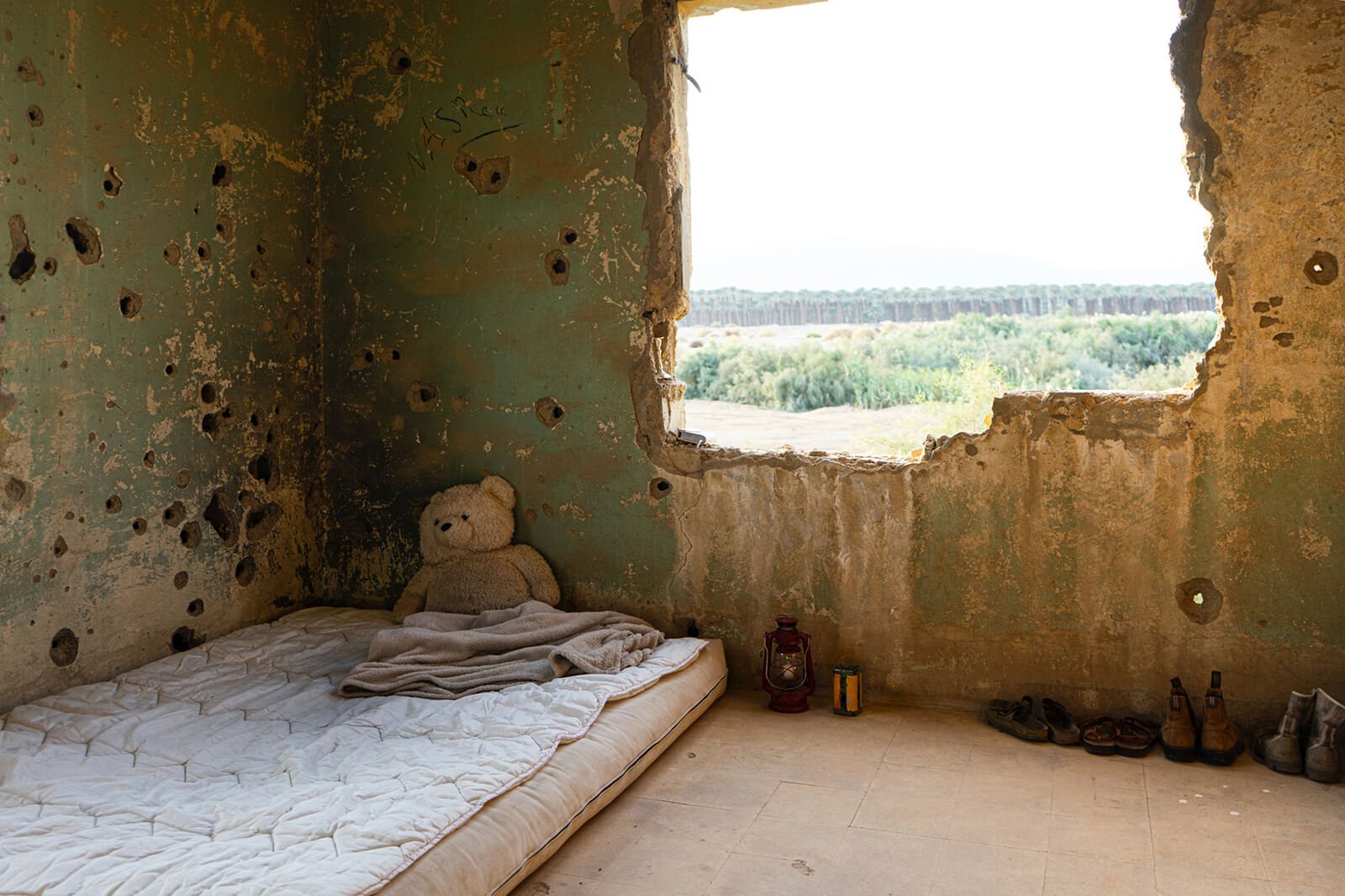
IMAGE COURTESY OF ELI MATITYAHU
www.elimati.myportfolio.com / @elimati10
“On one of my photography days, I went to photograph abandoned buildings in the Jordan Valley, which used to be a war zone. I walked between the buildings and took pictures, many of the buildings were burnt and dirty. One of the houses, the one you see in the series, caught my attention especially. I went into it and saw that its ground floor was clean. I went upstairs to the second floor and the sight I saw held my breath. After I recovered, I realized that someone lives in this place. This abandoned house serves as a sweet home for someone who is not present at the place.
The apartment was without doors and windows. I entered the rooms feeling uncomfortable. In the living room of the apartment was a low table in the center of the room with fresh fruit, a bottle of water, a notebook and a pencil. There were no chairs, but between the broken windows hung a hammock.
The bedroom had a mattress lying on the floor, with a blanket and a baby bear on it. Along the wall were shoes, a lantern and a prayer book. I quickly took pictures inside and out and immediately walked away as I felt I was entering someone’s privacy without permission. I felt that even an abandoned house could be a warm and sweet home. Many days later I thought about this place and who lived in it, and many of the questions I asked myself were left unanswered.”
Editor’s comment: Homes abandoned unwilling are one of the many terrible legacies of war and conflict. From this image we learn that the photographer isn’t interested in showing us humanity at its worst or unveiling the harrowing atrocities in action, but to expose the commonalities between the viewer and the environment. We look at the tidy little room, a teddy bear on a bed, shoes lined up – we begin to ask questions, we begin to see ourselves in the scene. This image will stay with me.
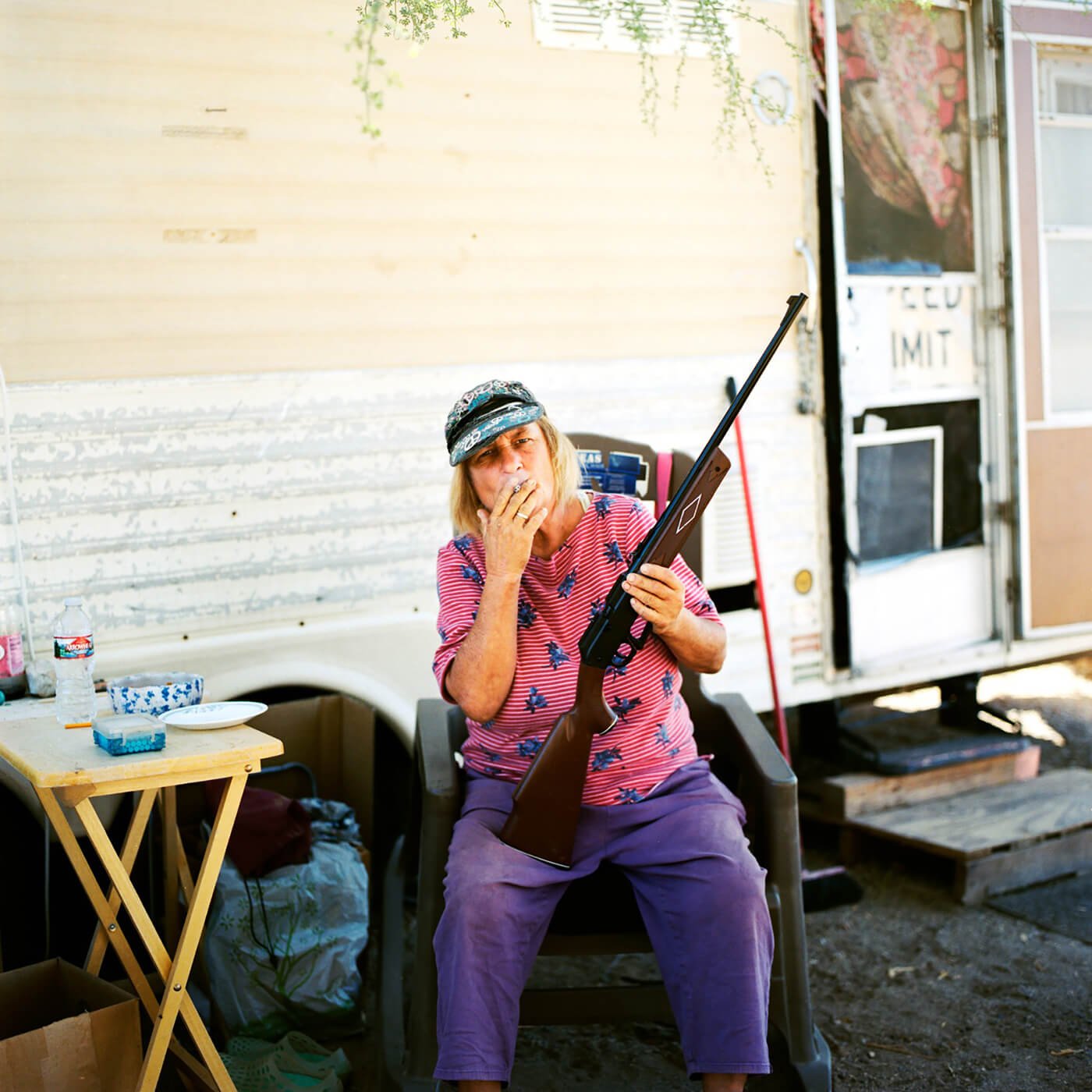
IMAGE COURTESY OF DANIEL SKWARNA
www.danielskwarna.com / @danielskwarna
From the series Desert Dweller – “A long-form personal documentary project that explores Slab City – an off grid squatter community of of felons, artists, veterans, snowbirds, and impoverished Americans living on the remains of a WWII marine base in the Sonoran Desert, California”.
Editor’s comment: Protecting and choosing our own homes is quite a privilege, and for those living in California’s Slab City it seems like a calling – proudly choosing a patch within this off-grid squatter community. This image struck me as the woman pictured seems to be on alert with her gun, but simultaneously relaxed as she smokes her cigarette in the sun. I imagine this might be quite a common state of mind within this unorthodox neighborhood.
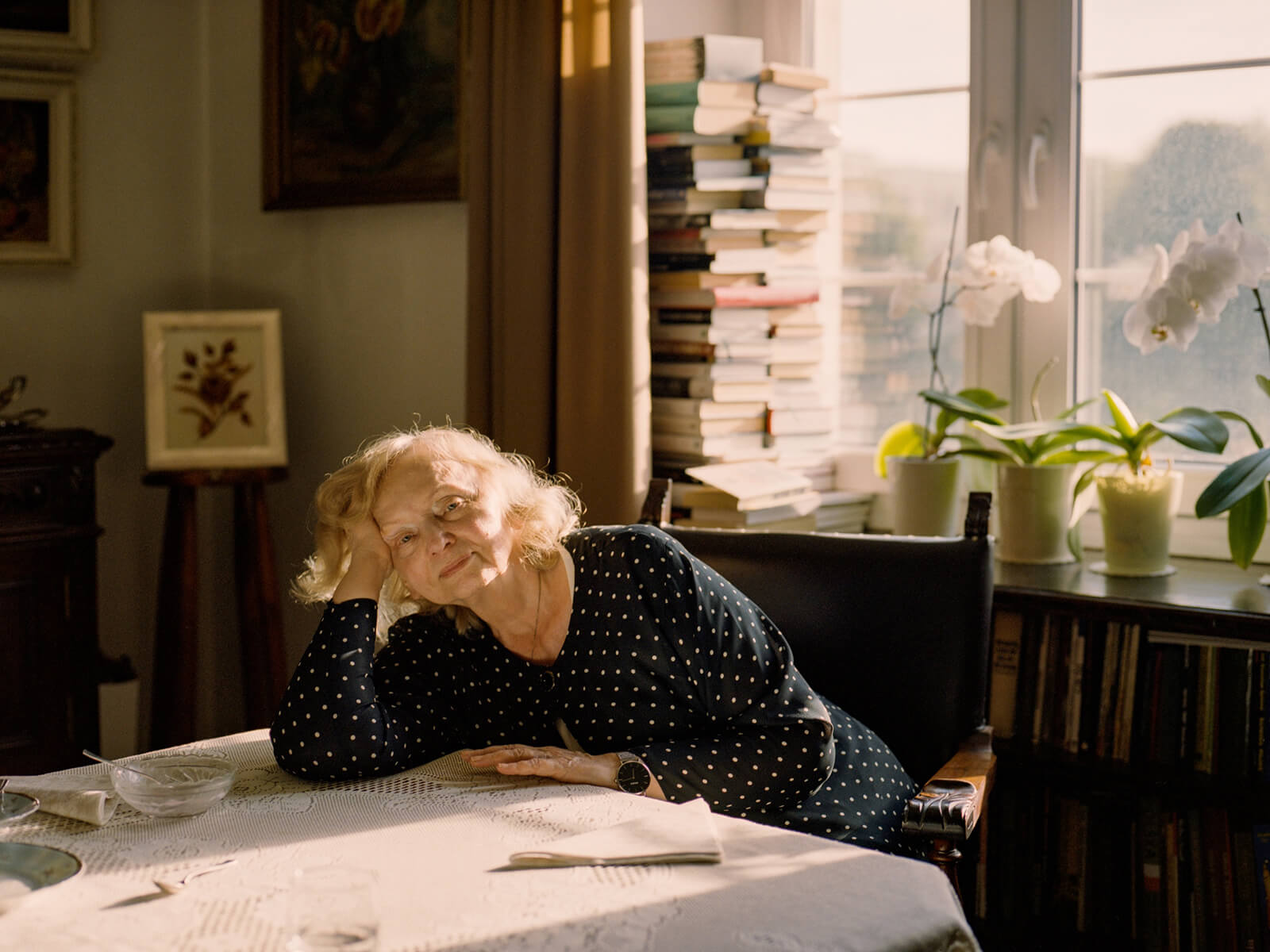
IMAGE COURTESY OF ZUZANNA SZAMOCKA
www.zuzaszamocka.com / @zuzaszamocka
“My grandmother, Wanda in May 2020, during our first meeting after 2 months of strict lockdown. We have just eaten her apple pie, and I asked her to sit in my grandfather’s chair, in this beautiful afternoon light like she’s bored. She laughed, she always used to tell me that intelligent people never get bored, as there is always something interesting for them to think about. But yet there she is – relaxed, concerned about the world, and maybe even a bit bored.”
Editor’s comment: “…intelligent people never get bored…”. This little snippet of conversation between photographer and subject – one of those intimate aspects of a portrait we’re not always privy to – sums up the atmosphere in this scene. The subject is relaxed, possibly a little fed-up of occupying the same space during the last few months of lockdown, but not bored, enjoying the afternoon light as well as the back-and-forth with the photographer. Another reminder that home can be people as much as place. Beautifully done.
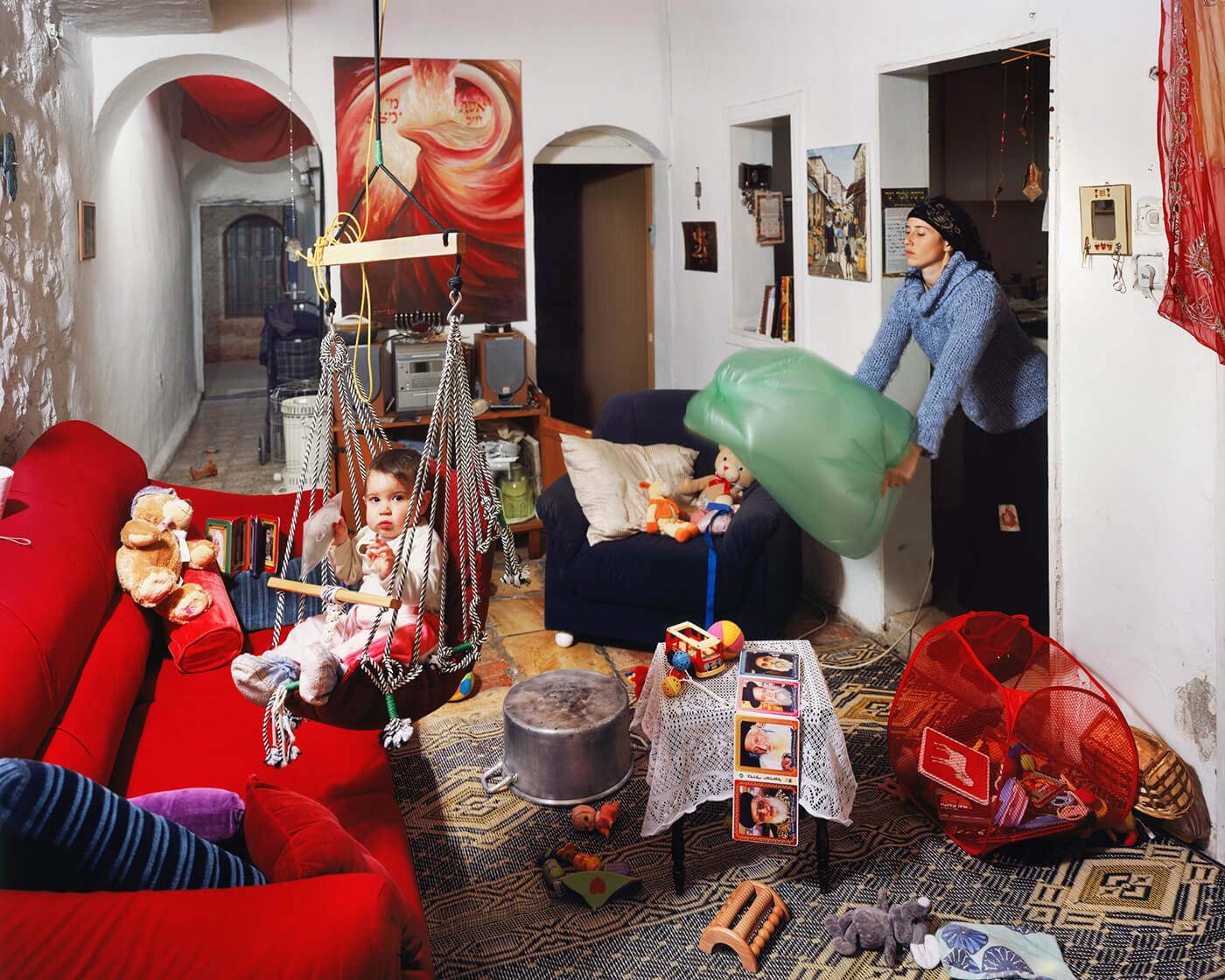
IMAGE COURTESY OF ASAF OREN
www.asaforen.com / @asaf.oren
From the series Domestic Moments – “A series of staged photographs of mundane activities, carried out in private domestic spaces. These domestic spaces capture the viewer’s attention with a profusion of light, colors, and details, which invites for a thorough observation and investigation of the properties and symbols in each space. However, these “documented” scenes present extreme daily routines, occurring in seemingly insignificant moments. Moments that we never really pay attention to and certainly do not bother to memorialize with a photograph.
The meticulous and penetrating documentation method engages the viewer’s attention, offering a detailed perspective on those daily situations and imbuing them with a greater sense of importance. But a more profound inspection will reveal that the main interest and subject matters are the domestic spaces and their contents, rather than the actions occurring in them. The contrast between those “unimportant” moments and the wealth of information and cultural hints found in the details creates a tensity. The same kind of tensity that raises the question “what deserves of being photographed?”.”
Editor’s comment: Even though this is a staged image, it’s a domestic reality for a lot of families. Living, eating, playing and working in shared spaces – regardless of a pandemic – is a familiar existence. The photographer poses the question ‘what is deserving of being photographed?’ and answers it with this layered portrait of home-life and its everyday chaos. The consistency of the color red across the scene ensures this image doesn’t become visually over-complicated but holds its concept of organised discord.
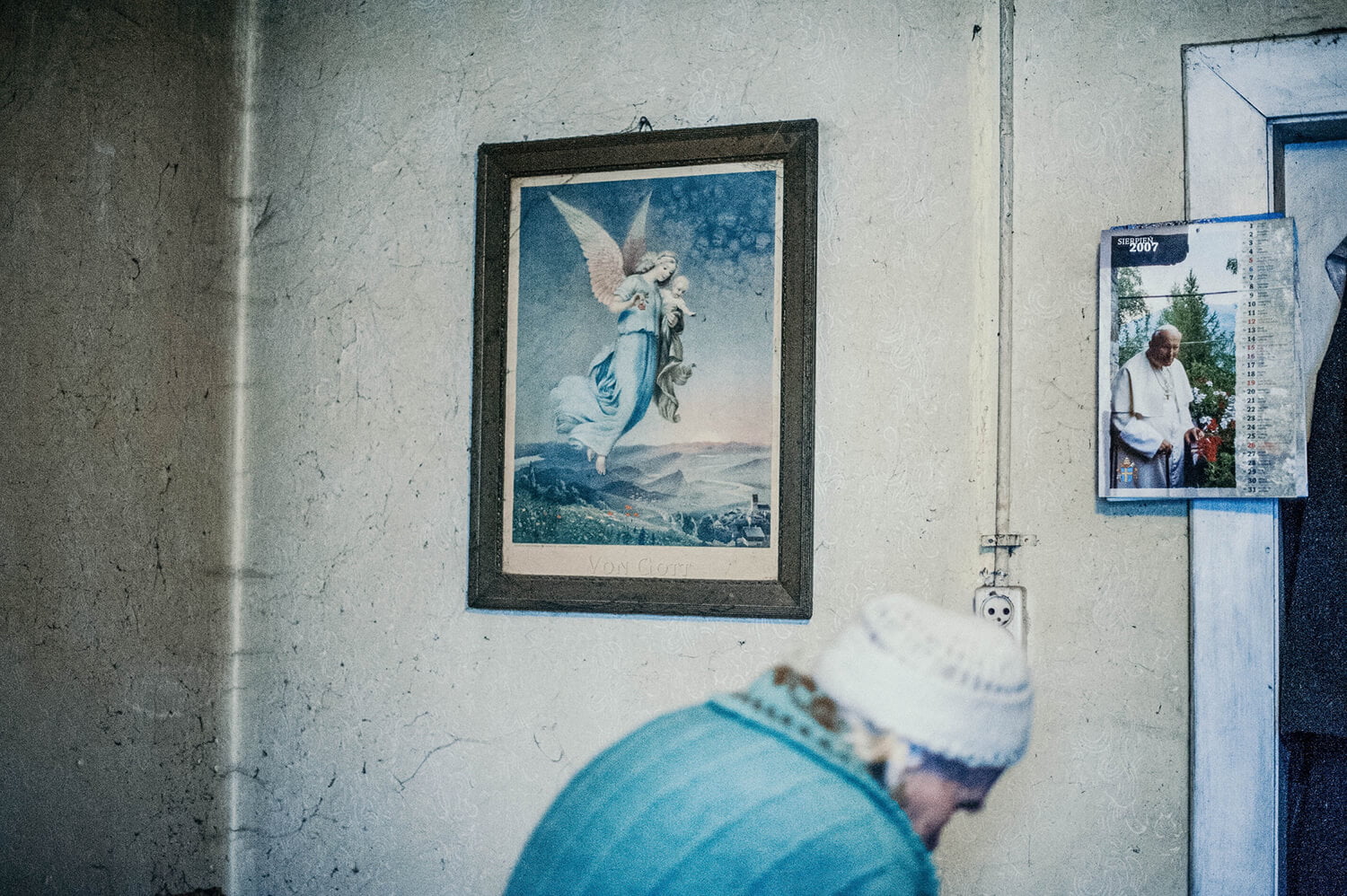
IMAGE COURTESY OF ALEKSANDRA KIRKO
www.sashakirko.com / @sashakirkophotography
“Mrs. Cecilia, a widow, who survived Nazi labour camp, here in her home in Northern Poland, where the time has stopped. I photographed her in 2015, when she was 91, still living alone and being able to take care of herself. She passed away a few years ago though. Her home struck me as a place of a very lonely but at the same time extremely strong person, who went through unimaginable things. The world she belonged to is now slowly vanishing and it was so exceptional to get the opportunity to see her place, that nobody ever will be able to reconstruct. She was just an ordinary woman and there are no books about her life. Photographs and stories is what will be left after her.”
Editor’s comment: Faith is a true touchstone for many, religion being a home inside oneself – where we can retreat into and nurture our souls in peace and privacy. The photographer describes Mrs. Cecilia’s (the subject), house as a place “…where the time has stopped.” and that’s exactly what has happened within the photograph – it seems to exist outside our familiar sense of home and other worldly possessions. The clever composition and timeless tones help us understand how Mrs. Cecilia found survival, and ultimately home, within her faith.
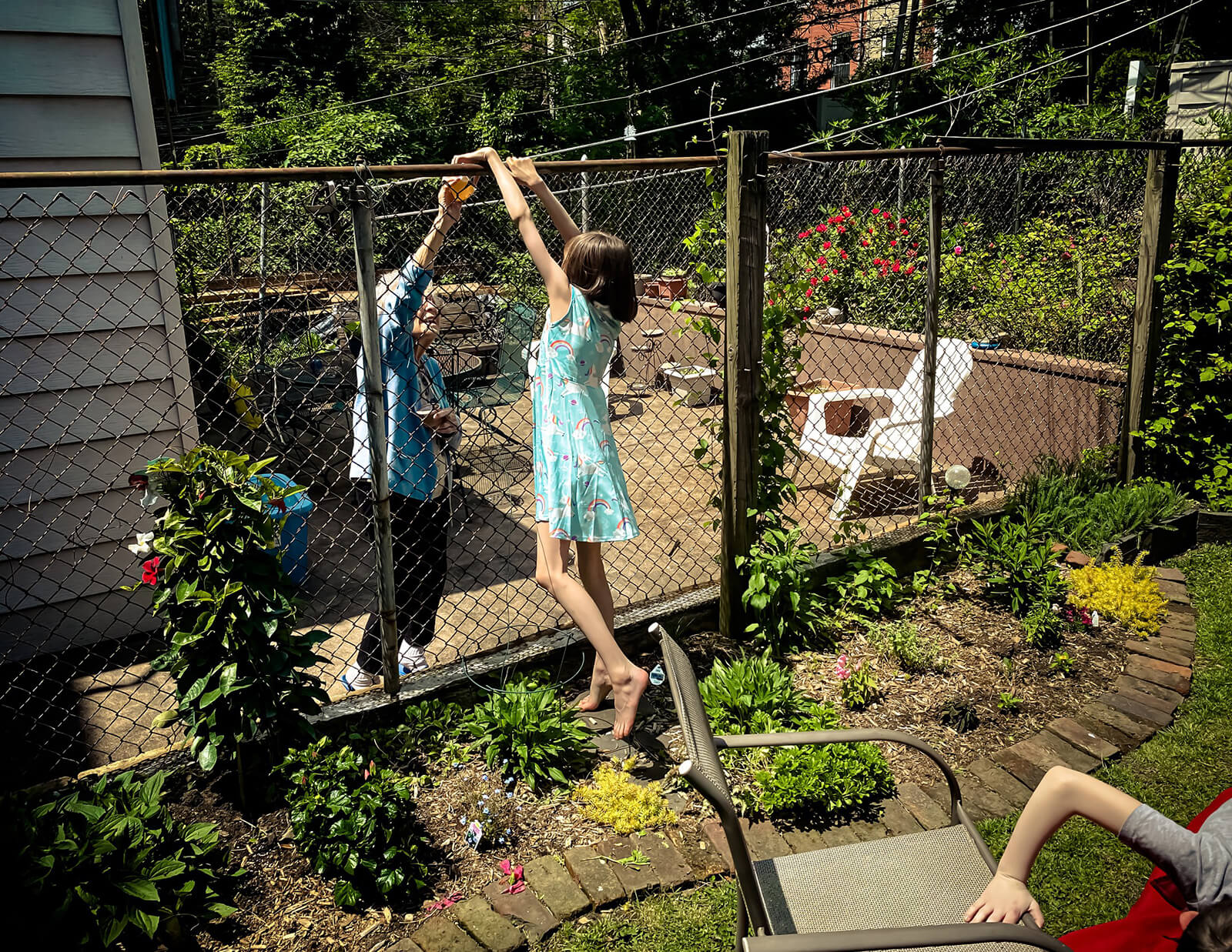
IMAGE COURTESY OF STEPHEN JESS
www.stephenjess.net / @stephenjess
“NYC delivered 1 million meals to seniors over the first months of lockdown. Clara reaches to share her neighbors fruit juice.”
Editor’s comment: As children our homes are usually the first place we explore, and for those of us with access to a garden or outdoor space, another patch for expedition. This is a beautifully captured image of adventure at home, of subtle moments in childhood that make up our treasured memories. Enjoying how we use our outdoor spaces, interact with our neighbors and admiring the magic in the everyday has brought some welcomed positivity to this difficult past year.
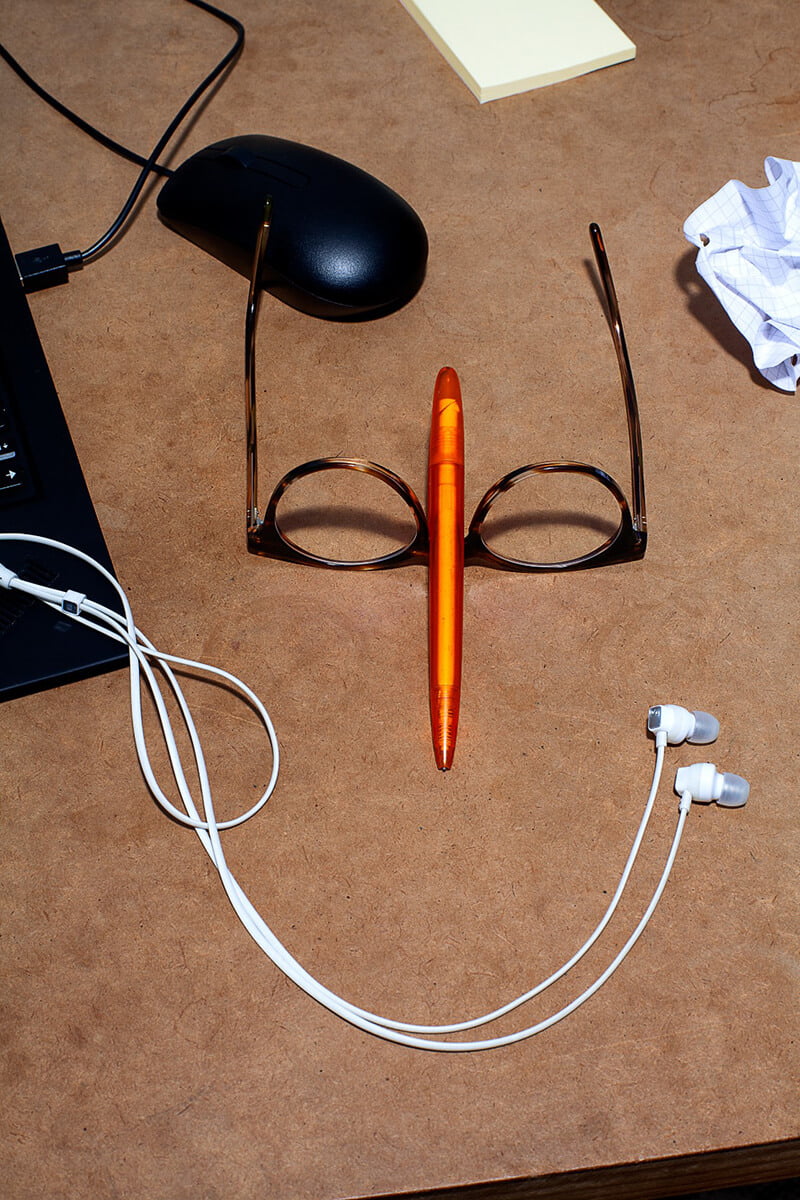
IMAGE COURTESY OF STUDIO LIKENESS
www.studio-likeness.com / @studio_likeness
From the series Making Friends – “A personal project on the topic of lockdown during the Covid-19 pandemic. In the past year we spent more time at home and saw less of our friends than ever before. Humans are social animals and we seek the company of others. Being isolated at home due to the pandemic is hard. But luckily as humans we are also predestined to see faces almost everywhere. This tendency is called pareidolia and causes us to interpret random images as familiar objects, particularly faces. Having that in mind we went looking for new friends in our own homes and discovered friendly faces all around. This feeling of humorous uplift is what we want to share.
In our photographs objects are always the main protagonists. In this series we brought them to life and made visible what we were missing. We encourage the viewer to find a different perspective at their home and discover new things, possibly new ,,friends” as well. Our series is about repetitive domestic situations that everybody knows. Sitting at your desk, straining spaghetti, doing laundry and all of a sudden a face appears and pulls you out of your routine for a moment.”
Editor’s comment: We now have a very different relationship with our homes since the pandemic hit. Learning how to master every aspect of our lives – working, living, exercising and socialising – within our limited spaces, hasn’t been an easy endeavor, but it has ultimately led to a new understanding of our surroundings. So, however challenging and repetitive it’s been at times, we found our way and positivity has triumphed – summed up well in this simply composed, smile-inducing image.
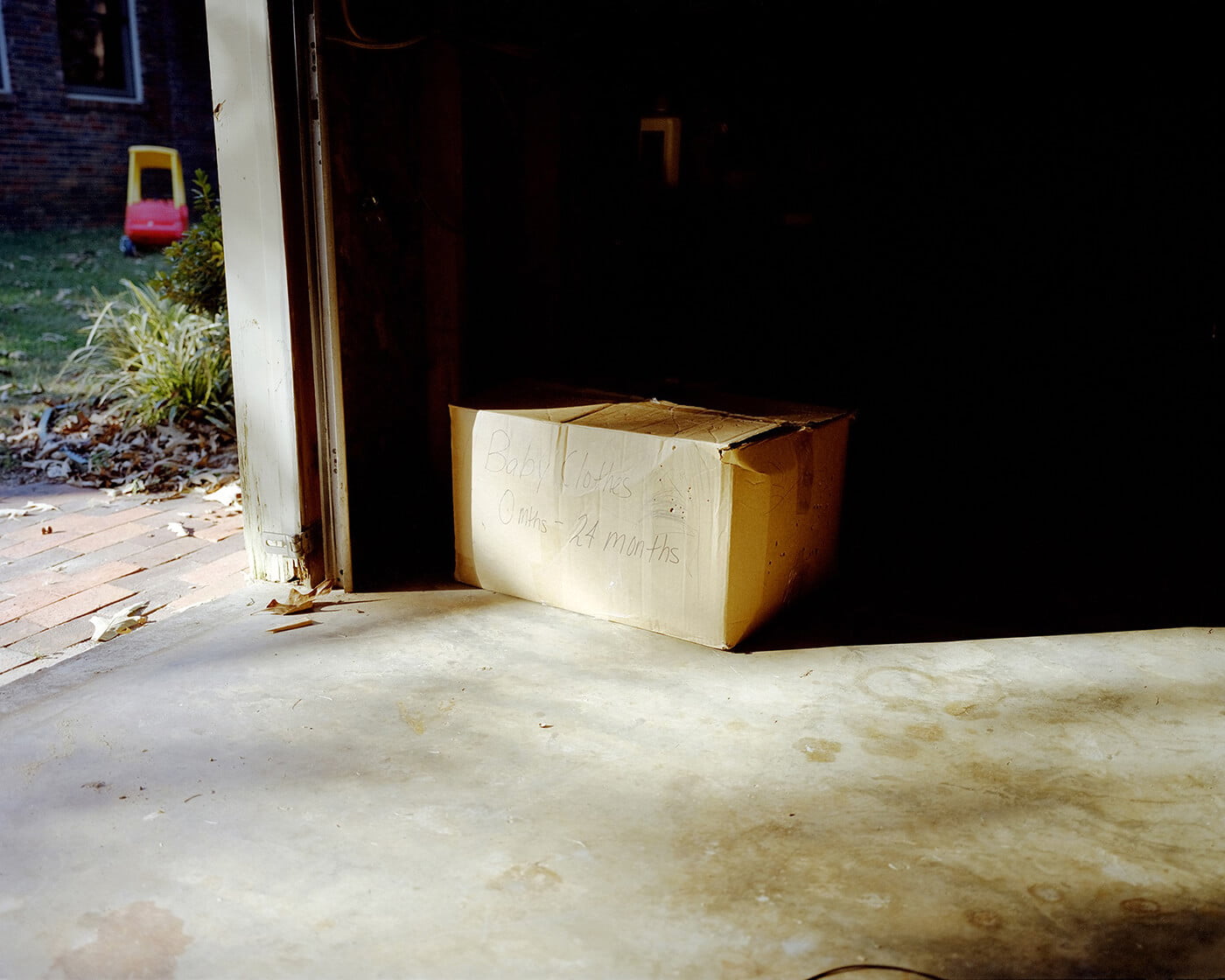
IMAGE COURTESY OF FRED MITCHELL
www.yayfredmitchell.com / @yayfredmitchell
From the series A Country Boy Can’t Survive – “”I asked a painter, Why the roads are colored black. He said Steve, It’s because people leave and no highway can bring them back” – David Berman
It was with a sense of urgency that I focused my lens on my immediate surroundings. Upon the realization of my impending departure from the region from which I hailed, I aimed to preserve a time and place. My reasoning was personal, so I may return to these photographs and experience them after they faded with time.
After I moved away, as far as I could see this work had concluded and served its purpose, yet I was haunted by an indescribable ache. The rose colored glasses with which I longed to view my past were clouded by malaise and melancholy. To make sense of these feelings I have tenderly examined the prominent features of my upbringing.
Within this ongoing documentation I found an underlying pang for events to have unfolded differently. As I have changed and developed, this world has remained static. Of course time wears on us all, but I cannot help longing for a better circumstances for these people and this place.”
Editor’s comment: This is a subtle, somewhat melancholy image, which speaks to ideas of life passing by, and the cherished memories that come with it. Using empty space and light and shadow (what’s gone and what’s to come), the photographer cleverly emphasises this theme, and the decision to include a sliver of outside in the frame, capturing a child’s toy in the distance, is a good one.
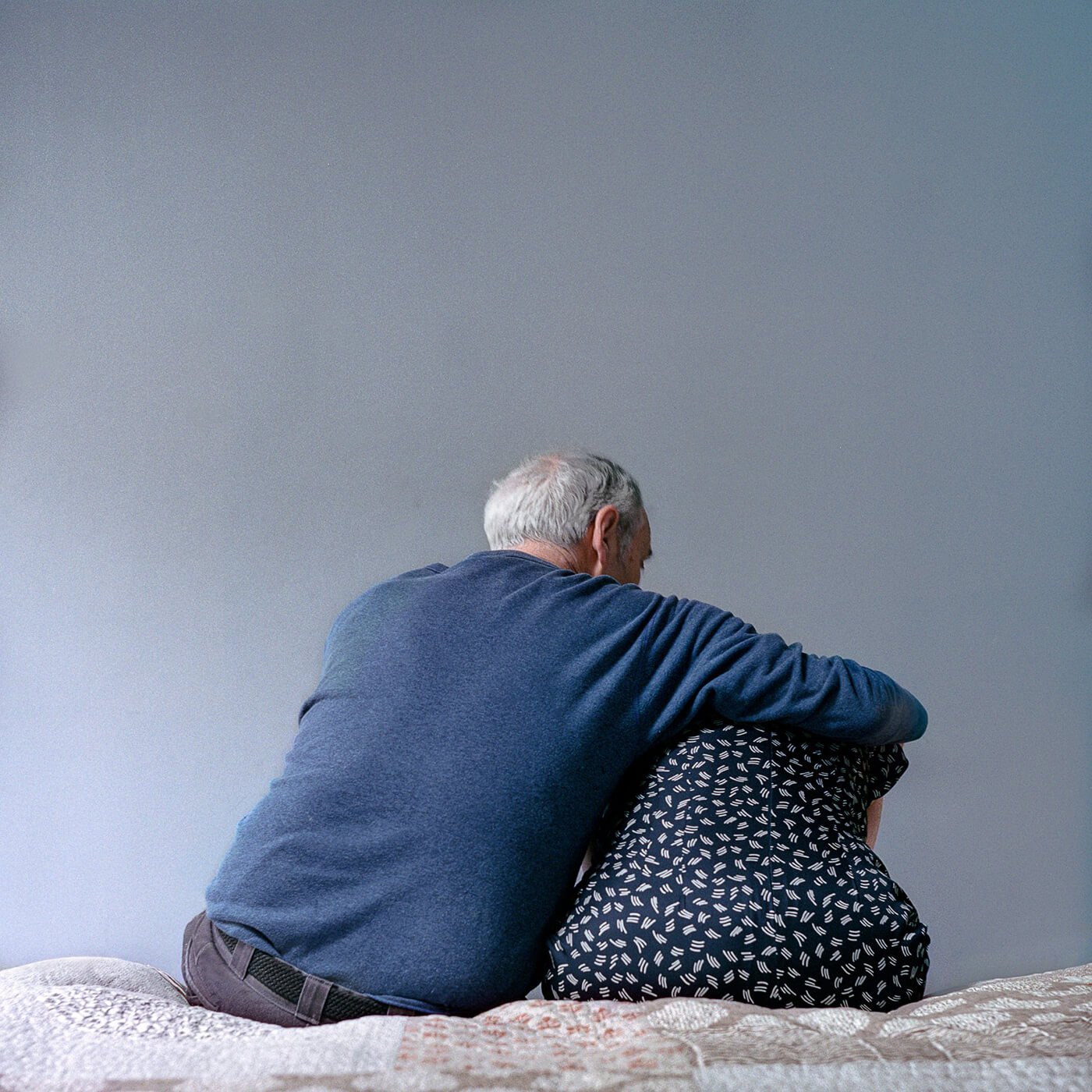
IMAGE COURTESY OF KATHRYN WEINSTEIN
@life_of_riley_retired
From the series Tenure – “On the Bed. Tenure describes the act of holding or possessing, as well as the status granted after a probationary period that protects one from dismissal. A meditation of home and husband, scenes crafted from my latter-day marriage. Ebbing and flowing in in universe the size of a house, we circle round each other as measures in time.”
Editor’s comment: People can be our true ‘home sweet home’ – parents, partners, wives, husbands, siblings, children, friends – they are our foundations. Our identity can be defined by these relationships; swallowed up in them or shining through in a response to them. This beautifully constructed image paints a picture of a genuine partnership at a vulnerable time, in the most private space of a home – the bedroom. The tones, solemness, poses and use of negative space really emphasize the unity between the subjects and the safety sought within each other.
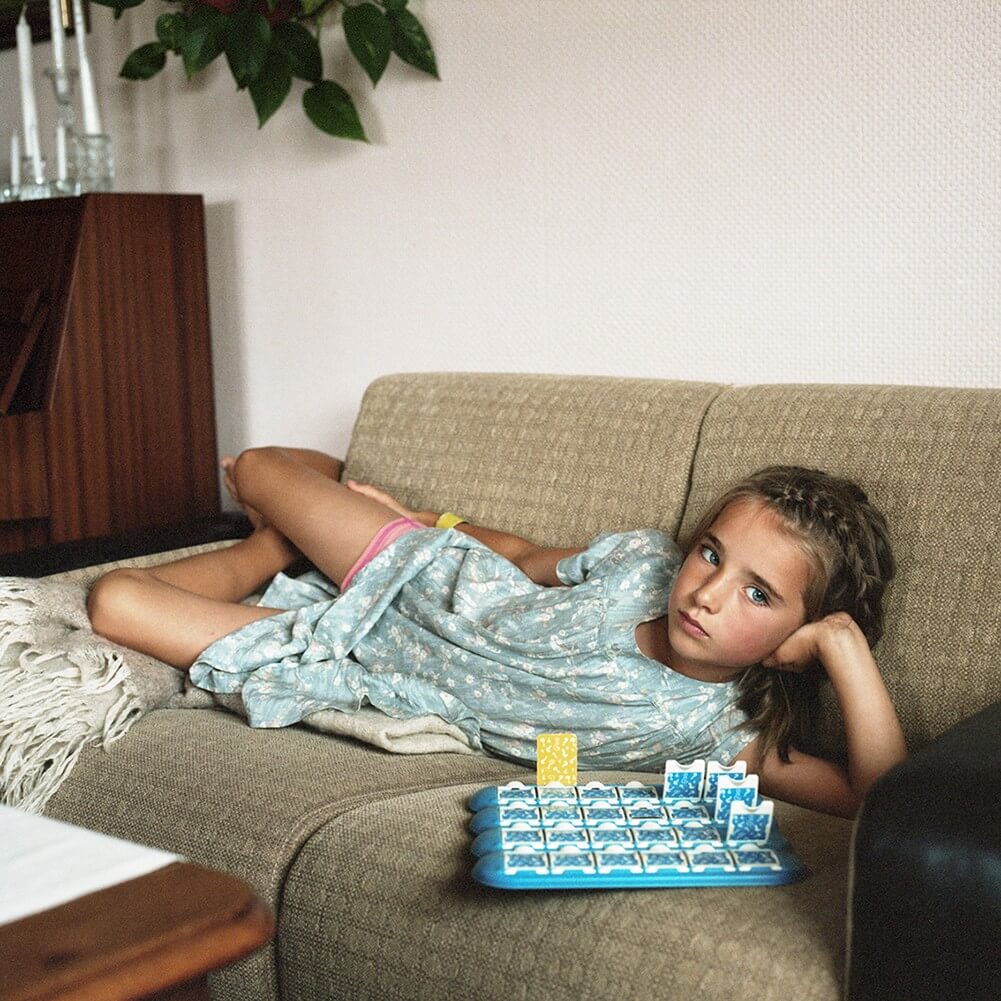
IMAGE COURTESY OF MIRJAM STENEVIK
www.mirjamstenevik.com / @mirjamstenevik
From the series I don’t know who I am, only where I’m from – “This is a documentary project about growing up in a small community, on an island off the west coast of Norway. It’s also about a girl eventually moving away, desperate to distance herself from the place where she was born and raised. But more than anything, it’s a personal journey of coming back, after years of therapy and of living abroad, trying to look at the place with fresh eyes — without repressing the bad memories. This is my attempt at embracing the inevitable fact that some things will forever be connected. Maybe I’ll never know who I really am. But this is definitely where I’m from.”
Editor’s comment: For some of us moving away from our family homes, the towns we grew-up in and their inbuilt communities, seems like the only path to adulthood and independence. Coming and returning, moving from one space into the other, is as much an inward journey as it is an outward one. Photographing and documenting this can be vital for the person to unpack and understand the process better. Full of symbology and weighted down with its sombre, daydream like tones I feel this image really reflects the photographer’s emotional attachment to the meaning of home.
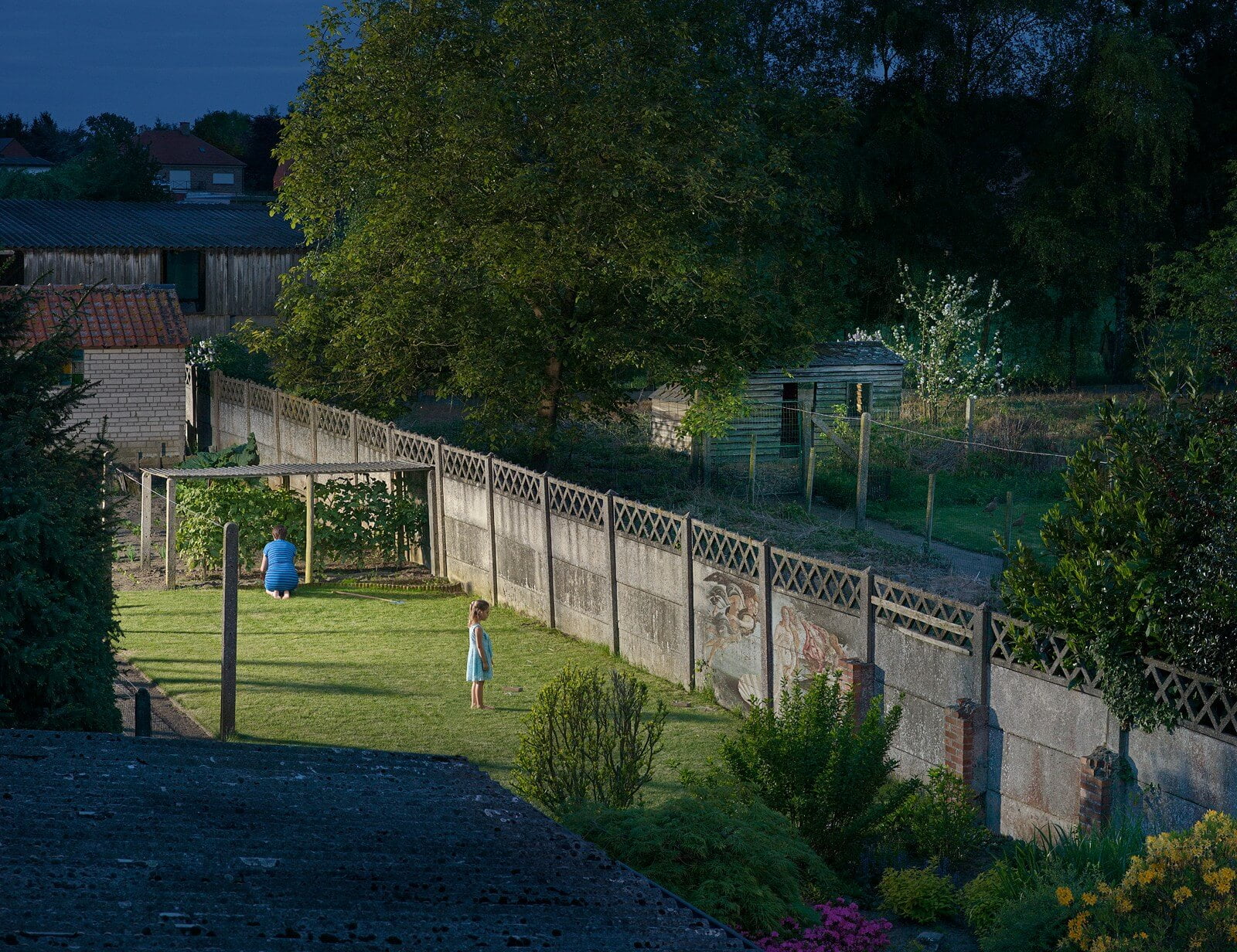
IMAGE COURTESY OF JAN PYPERS
www.janpypers.com / @janpypers
From the series Nightgardeners – “A series about people who are gardening at night or are doing something else they’re not supposed to be doing at that time. Gloomy, sometimes scary but never threatening. The event seems random and yet perfectly staged. Combining scale models with reality, I attempt to control the bizarre own life that thoughts can lead. I often start with an existing memory, often from my childhood, and try to give that reality a slight twist. Our memory ultimately does the same: we color our own memories.”
Editor’s comment: Privacy is one of the cornerstone advantages of having your own home – whether you own or rent it, doing as you please within the confines of your very own space is a true joy. While we may not be able to understand each other’s interests or past-times, we can certainly identify with the desire of attempting to merge freedom and control within these territories. The process of combining scale models with real images to control the narrative within each scene, reveals the photographer’s own need to explore these contradicting elements.
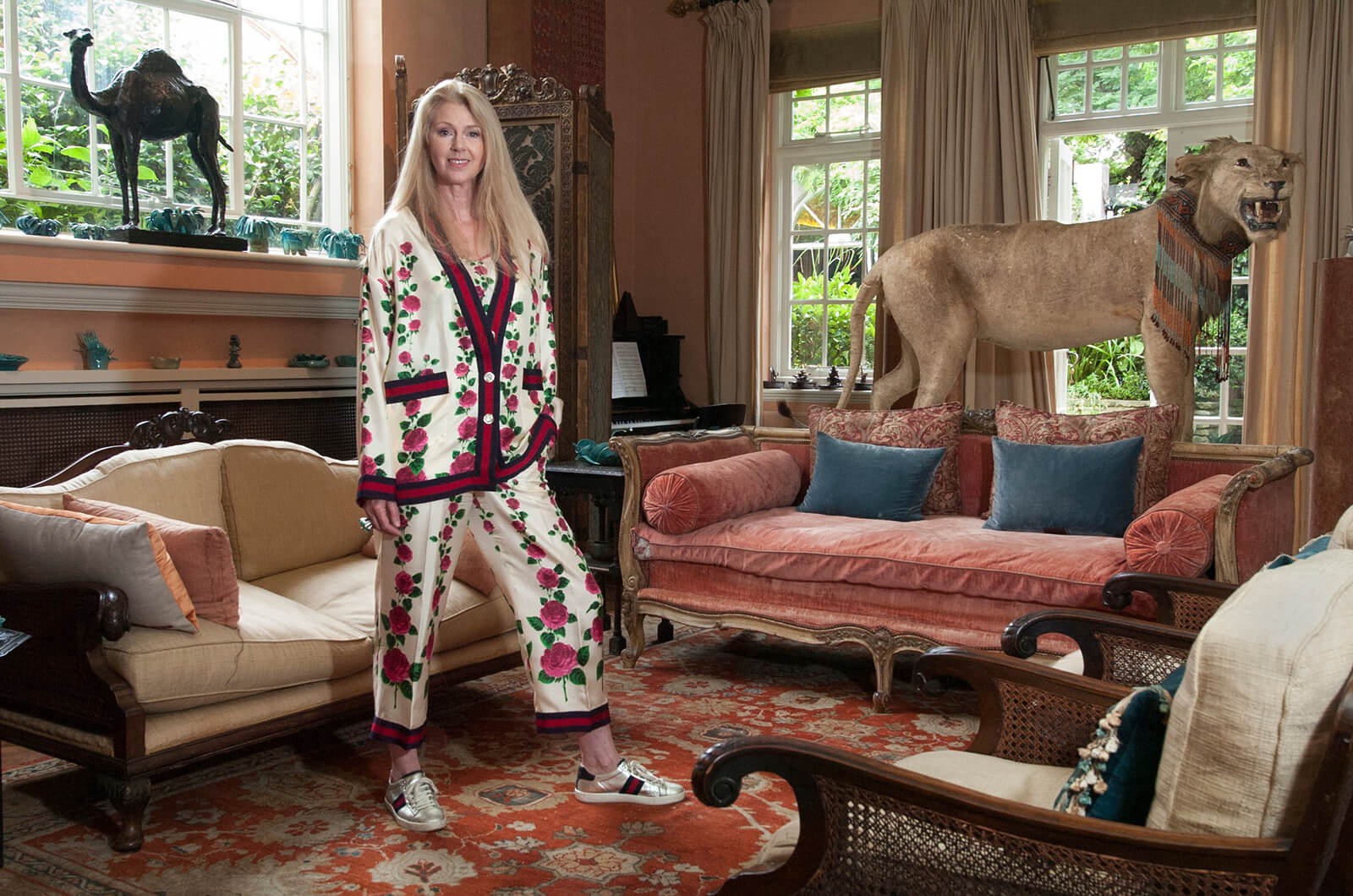
IMAGE COURTESY OF OSCAR KORNYEI
www.oscarkornyei.com
Lion Queen: There’s a lion in ceramicist Kate Braine’s 18th Century living room in central London – though it has long ceased to roar. But the plethora of other ‘creatures’ inhabiting shelves, tables and mantlepieces throughout this glorious four-storey Queen Anne Chelsea home look as if they have freshly crawled in. ‘I think my pieces feel very alive,’ says Kate, who also designs exotic jewellery and has created sculptures for the likes of David Bowie. ‘I like to think they have crept in from the garden, or the sea, and found a place to settle down in this house. I’m frightened of forests, in darkest night, and the monsters that may live in the depth of the sea. When I was 11, some other children tried to drown me. Then, in 2004, I survived the tsunami in Thailand. But my fears inspire some of the things I create – which then take on a life of their own.’ More than 300 of these fabulous and fantastical pieces – in glazes of vibrant red, green, coral and azure – are now comfortably ensconced in her house, which is itself is a constantly evolving work of art. When Kate first found it 20 years ago it was tired – she refurbished and restored all the rich original wooden floors, among other things. There are ghosts in this house, says Kate – an old gentleman who glides through the walls at night, and a little boy she sometimes hears on the stairs. But ‘from the beginning I felt it was a place where I belonged. A place I was meant to be.’
Editor’s comment: To be invited into someone’s home is a wonderful thing – seeing how people design, arrange and curate their safe-space is always a treat for me. This image captures that moment perfectly. There’s quite a lot of interesting items for the viewers eyes to rest on in this scene, but the photographer is careful not to clutter the composition and ensures the main subject is celebrated without being distracted from – a well-balanced image and window into a delightful, if a little ethically troubling, domain.
